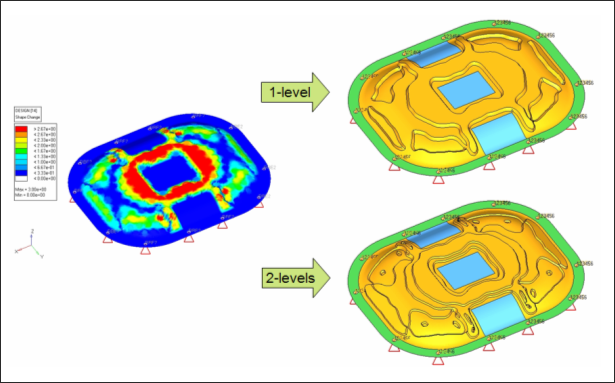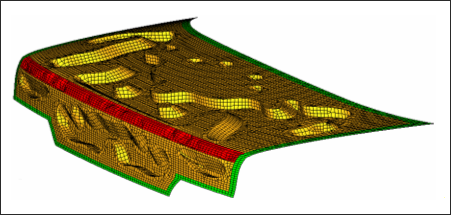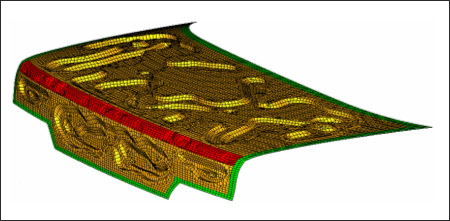Interpretation of Topography Optimization Results |

|

|

|

|
|
Interpretation of Topography Optimization Results |

|

|

|

|
The autobead feature of OSSmooth allows OptiStruct topography optimization results to be interpreted as one or two level beads. The following figure shows the level of detail captured in both cases; while the 2-level approach captures more details, it is more complicated to manufacture than the 1-level interpretation, often without significant performance gain.

Autobead interpretation of topography optimization result.
One example of post-processing of topography optimization is shown below with the following parameter setting in the OSSmooth parameter file:
#general parameters
input_file decklid
output_file decklid.fem
output_code 1
#specific parameters
autobead 1 0.300 1
remesh 1

Autobead result from topography optimization.
Some topography performances are relying on the half translation part. OSSmooth can interpolate topography optimization results to 2-layer autobead (autobead third argument 2). Here is one example of creating 2-layer autobead with the following parameter setting in the OSSmooth parameter file:
#general parameters
input_file decklid
output_file decklid.nas
output_code 1
#specific parameters
autobead 1 0.300 2

2-layer autobead result from topography optimization.